The Design and Implementation of an Innovative Course on the Creation of Cultural Landscape Images: A Case Study of Dalin Township in Taiwan
Abstract
:1. Introduction
2. Materials and Methods
2.1. Study Design
2.2. Course Planning and Design Procedure
- 1D, discover. This stage consists of: describing the curriculum goals, activity contents, problem awareness, and various other topics; organizing on-site surveys to help students understand more about the abundant features of the community (humanistic, cultural, and geographical features, landscapes, and industries) and immerse themselves in the warmth of the spaces, images, and residents of the community; organizing icebreaker activities to train the students’ teamwork and creative thinking skills, thus facilitating them in exploring the spatial imagery, extracting cultural symbols, and developing concepts;
- 2D, design. This stage centers on the meaning of observations by using empathy maps, as well as analyzing, discussing, and defining the meanings of each team’s observations;
- 3D, develop. This stage is about symbol conversion and interpretation. The students participated in multi-perspective creative thinking activities, tested local artistic media, and developed diverse concepts including beginner folding techniques, three-dimensional structures, material exploration, design discussions, communication skills learning, and creative proposals;
- 4D, deliver. This stage focuses on the students’ storylines about their meanderings around Dalin Township. Actual practical outcomes in prototype design, design practice, audiovisual composition, and photographic and creative exhibitions were generated by leveraging the cooperation between the students and the guidance of interdisciplinary teachers (who specialize in field knowledge, ICT approaches, and photographic composition and expression).
2.3. Curriculum Design and Educational Settings
- Unit one was supported by Mr. Chiang Ming-he (who gave an 8 h course), who gave guided tours to students of the community’s cultural spaces and explained the stories behind the featured attractions and friendly community spaces;
- Unit two was supported by Mr. Lee Wang-pao (who gave a 4 h course), who specializes in ICT integration and Arduino lighting module creations. The students learned how to connect LED light strips to an Arduino board and make them flash by writing code;
- Unit three covered photographic composition and photography techniques and was supported by Mr. Wu Ming-shu (who gave a 4 h course). He teaches students the principles of image composition and offers a visual guide to the techniques of photography.
2.3.1. Field Exploration and Concept Development
2.3.2. D Wearable Creations
2.3.3. Cultural Landscape Shaping
2.4. Study Participants and Settings
2.5. Study Instruments
2.5.1. Quantitative Instruments
- Student core competencies scale
- 2.
- Course feedback survey
2.5.2. Qualitative Instruments
- Display and evaluation of 3D wearable creations
- 2.
- Focus group interview records
3. Results
3.1. Student Core Competencies Scale Results
3.2. Course Feedback Survey Results
The teacher pays attention to our study (student 1). She is a very serious and friendly teacher (student 2). I think I have learned a lot (student 4). The teacher is really hardworking in class, showing us a lot of work, guiding us really hard, and giving us a lot of new stimuli (student 7). The teacher was very thoughtful and asked us to go to Dalin to do local cultural connection creation (student 11). I hope to have more time to do it next time (student 12). The creation combines old and new elements and creates unique ideas and finished products, and because of the combination of local customs, the whole event has a strong human touch (student 17). Although I feel tired during the creation period, the sense of accomplishment at the moment of making the work is full of emotions (student 19). Very happy with the finished product (student 20).
3.3. Displaying the Wearable Creations
| Wandering around Dalin at a slow pace. |
| The bygone era of the town is rooted in its serenity, |
| the flowers bloom and wither, the times change, yet the one thing that remains is Dalin’s distinctive warmth. |
| Those who migrated away return to their hometown and recollect the fond memories of their childhood. |
| The residents express gratitude to the gods for blessing them all year round. |
- Migration (team members: You Songlin, Wang Yixin, Shi Huiwu, Chen Yaqi, Liao Chuying)
- 2.
- Jingle bells (team members: Li Kaili, Luo Peiyun, Lin Lian, Zhang Jiayu)
- 3.
- Bless and light (team members: Wu Zhixian, Song Peirong, Zheng Xuan)
4. Reflection and Discussion
4.1. Perspectives of the Students
- Creativity stems from the interpretation and conversion of cultural symbols. Lynch (1960) suggested that various differences and relationships exist in the environment, and the observer employs a strong ability to adapt, choose, organize, and give meaning to what they see in accordance with their goals [16]. During the course, the students collected and interpreted cultural symbols around them based on their own observations and experiences. Their ability to do so was rooted in their prerequisite knowledge and literacy as well as their imagination of local stories from an observer’s standpoint.
- Team D interpreted the symbols and metaphors of local cultural symbols by illustrating the atmosphere of a slow city and migrants returning home. They emphasized the application of paper materials, the dynamic aesthetics of wearing the creations, and the use of lighting to form images and cultural storylines (see Table 4).
| Verbatim | Coding |
|---|---|
| Clothes and accessories are made of origami fish, which symbolizes migration. Many young people in Dalin leave their hometowns. There are many fish heads facing the protagonist in the work, hoping that young people can go back to their hometowns. | (D4-Q1-10) |
| The snail represents Dalin’s guardian elf, who illuminates the road in the dark at any time and protects everyone. | (D5-Q1-15) |
| Three-dimensional window grilles are made of origami, and the cellophane is translucent and shiny, which means breaking through the tradition, and the feet are surrounded by trees and vines. | (D3-Q1-16) |
| The long skirt symbolizes the snail’s saliva, and the traces of walking, and there are different kinds of fish, which means that the heart is attached to Dalin. | (D2-Q1-21) |
- Team B was inspired by time traveling in which the interactions between antiques and childhood scenes resulted in conversations between childhood merriment and old spaces (see Table 5).
| Verbatim | Coding |
|---|---|
| The abandoned shower room represents the childishness of the old space, with green iron grilles on the raincoat and apple green and purple floor tiles. | (B1-Q1-12) |
| There are many cats in the community, and they are talking with the enthusiastic and lively Jingle Fairy wearing a red scarf. | (B2-Q1-17) |
| Using slow-motion photography, the little elves walking through the alleys seem to be back in the Japanese alleys. | (B4-Q1-11) |
- Team E was inspired by the spiritual sustenance of local religious beliefs. To symbolize the gods’ spiritual blessing of Dalin residents, they fused innovative interactive technological elements with temple imagery, folklore, and colorful structures (see Table 6).
| Verbatim | Coding |
|---|---|
| The temple is the patron saint and belief of the region, and the lights bring the image of hope and protection. | (E3-Q1-26) |
| The stand-up of moon blocks of Liyan in Wusheng Palace represents the coming of the gods. The color is bright red and green of traditional temple fairs. | (E1-Q1-02) |
| When the small moon blocks in the hand collide, the LED light of the big moon blocks on the head will be triggered and light up, representing the feeling of the coming of the gods. Use exaggeration to collide with traditional elements. | (E2-Q1-25) |
- 2.
- The learning outside-the-classroom approach reinvigorated the students’ curiosity and motivation. Huang (2013) suggested that the prerequisite for shaping new cultures is for people to leave their personal space, show concern for society and their surroundings, and reassess themselves based on their position in the world [25]. In the post-lesson interviews, several students divulged that they grew up in rural areas or that their grandparents had lived in rural areas. Taiwan’s economic boom, however, has changed livelihoods as people have moved to the city, thereby widening the urban-rural gap. When they had the chance to revisit rural areas and observe agricultural landscapes, the students had fond recollections of their childhood, which triggered ripples of nostalgic affection and imagination (see Table 7).
- 3.
- Gaining a sense of achievement and confidence through learning-by-doing. By answering questions during the learning by doing the teaching approach, the students were able to systematically activate their insight and observation skills to identify target users and solutions through group discussions. This process of searching data to solve problems is in line with the principles of Dewey’s learning-by-doing approach and is the primary goal of DBL, i.e., the most effective learning outcomes are acquired through problem-solving (see Table 8).
- 4.
- Creating more possibilities through the joys and sorrows of teamwork. Shan and Ho (2003) indicated that teamwork is characterized by helpfulness, coordinated efforts, a shared approach to working, open communication, and friendliness [28]. For art students, however, teamwork is often a major obstacle because students prefer and are used to making creations by themselves, in freedom and without constraints from others. Even though they have excellent individual performances, they crumble during teamwork efforts and are unable to listen to others or express themselves to others, and they have poor emotional quotient levels. By implementing design-based learning and teamwork tasks, this course exposes students to longer opportunities for balancing their relationships with others. This is important in teamwork as some people are natural leaders while some prefer to be subordinated (see Table 11).
- 5.
- Discovering one’s unique interests and expertise through diverse exploratory tasks during the course. Wu (2019) found that regardless of their academic achievements or social participation, university students were capable of gaining a sense of accomplishment and reinforcing their confidence when they expressed themselves [2]. The curriculum of the course in this study was designed in accordance with DBL. The students would seek solutions through discussions or learn new things from external sources when they encountered problems. This indicates that every student had their own talent and had opportunities to discover their strengths and interests when they were dealt with different possibilities for exploration and stimulation. These experiences gradually became their nourishment and source of empowerment as they intangibly unlocked their hidden potential (see Table 13).
4.2. Reflection of the Teacher
- Conversing with methods. This study applied the learner-centered learning teaching strategy in combination with DBL so that students could learn outside the classroom and connect with their surroundings, thus generating more motivation and direction. Learning by doing allowed them to have practical hands-on experiences in which they experimented with various materials and new technologies and widened the depth and breadth of their perspectives, thus sparking more creativity. Lastly, by implementing multidimensional evaluations, the teachers were able to identify the advantages and drawbacks of the curriculum design and the students’ learning habits and genuine opinions, which served as a reference for future revisions to the teaching approach. Rapid social developments in recent years have broadened the scalability of design thinking and creating. Therefore, this teaching method should be more in line with the market situation and environmental conditions, with revisions and adjustments made whenever necessary. This is especially important in teaching art design courses, as teachers not only have to impart theoretical knowledge, but must also be able to design practical tasks to increase the significance of accumulating knowledge and experience. When correct teaching methods are used, students will react positively to teachers’ dedication and useful teaching content.
- Conversing with cultures. The course connected local agricultural and rural resources to simulate the students’ thinking skills with respect to humanities exploration, media integration, innovative performance, and localized implementation. This concept is not merely a sudden flash of inspiration, but an entire storyline about a life or some other issue. An environmental image is the result of the mutual effects between an observer and their surroundings. Through different perspectives, students learned about the diversity of people, matters, time, land, and objects in urban landscapes, thus expanding the meaning of observing. The students also exuded different levels of self-confidence through their creations.
- Conversing with teams. The course emphasizes teamwork and interdisciplinary co-teaching, as well as the 4D framework (discovering, defining, developing, delivering), to enable the students to improve their practical skills and rapidly transform their ideas into action while continuously making revisions and adjustments to complete their creations. The process of teamwork is marked with highs and lows and it takes time for team members to get along well with each other. However, with the correct materials and a spirit of experimenting with different approaches, the students overcame their reservations about performing in public, took their share of the blame for making mistakes, and enjoyed the process of chatting and debating. They truly experienced the value of having a friend in need. The students were also grateful for the opportunity to cooperate with one another as they found that, instead of doing it alone, they required a partner to make their creations. Additionally, interdisciplinary co-teaching allowed the experts to impart knowledge about diverse technical concepts to the students and break down the barriers or difficulties of teachers teaching alone, thus adding more creativity and modernity to the overall course.
5. Conclusions and Suggestions
Funding
Institutional Review Board Statement
Informed Consent Statement
Data Availability Statement
Acknowledgments
Conflicts of Interest
Appendix A
| Dear students: This questionnaire mainly wants to know the status and thoughts of each student’s five core abilities before and after the course of “Introduction to Design” this semester, so please tick the box with your exact thoughts at this stage. | ||||||
| No | Question | strongly disagree | disagree | neutral | agree | strongly agree |
| core competence: team communication | ||||||
| 1 | I can listen to the professional opinions put forward by team members. | 1 | 2 | 3 | 4 | 5 |
| 2 | I can give back my ideas to my team members. | 1 | 2 | 3 | 4 | 5 |
| 3 | I can understand the main direction of the discussion when discussing it with team members. | 1 | 2 | 3 | 4 | 5 |
| 4 | I can understand the professional terms used by team members when communicating. | 1 | 2 | 3 | 4 | 5 |
| 5 | I can use effective communication tools to facilitate communication with team members. | 1 | 2 | 3 | 4 | 5 |
| 6 | I can work together with team members to complete the task objectives. | 1 | 2 | 3 | 4 | 5 |
| 7 | I enjoy working with team members to accomplish mission goals. | 1 | 2 | 3 | 4 | 5 |
| core competence: implementation | ||||||
| 8 | I can actively discover problems encountered in the process of teamwork tasks. | 1 | 2 | 3 | 4 | 5 |
| 9 | I can propose practical solutions to problems identified during teamwork tasks. | 1 | 2 | 3 | 4 | 5 |
| 10 | I can evaluate how I was doing in teamwork when working with team members on tasks. | 1 | 2 | 3 | 4 | 5 |
| 11 | I can evaluate how my peers were doing in teamwork when working with team members on tasks. | 1 | 2 | 3 | 4 | 5 |
| 12 | I can evaluate how the overall performance of were doing in teamwork when working with team members on tasks. | 1 | 2 | 3 | 4 | 5 |
| 13 | I can make specific suggestions for improving the performance of the teamwork after completing tasks in cooperation with team members. | 1 | 2 | 3 | 4 | 5 |
| core competence: field-based knowledge and skills | ||||||
| 14 | I can notice current conditions and trends in rural communities | 1 | 2 | 3 | 4 | 5 |
| 15 | I can understand the advantages, disadvantages, and characteristics of spaces in rural communities | 1 | 2 | 3 | 4 | 5 |
| 16 | I can understand the distinctive places or cultural stories of the spaces in rural communities | 1 | 2 | 3 | 4 | 5 |
| 17 | I can understand the domain knowledge of the field (e.g., size, style, media, sense of space) when performing spatial creation in a rural community. | 1 | 2 | 3 | 4 | 5 |
| 18 | I can understand the correlation between the domain knowledge of the field (e.g., customs, human geography) when performing spatial creation in rural communities. | 1 | 2 | 3 | 4 | 5 |
| 19 | I can propose solutions to problems when performing spatial creations in rural communities. | 1 | 2 | 3 | 4 | 5 |
| 20 | I have grown in domain knowledge while performing spatial creations in rural communities. | 1 | 2 | 3 | 4 | 5 |
| core competence: technological value | ||||||
| 21 | I can notice the current trend of interactive technology | 1 | 2 | 3 | 4 | 5 |
| 22 | I can understand the basics of interactive technology. | 1 | 2 | 3 | 4 | 5 |
| 23 | I want to combine my work with interactive technology | 1 | 2 | 3 | 4 | 5 |
| 24 | I can propose a form of expression that combines space creation with interactive technology | 1 | 2 | 3 | 4 | 5 |
| core competence: reflection | ||||||
| 25 | I can understand my preferred learning style (e.g., prefer reading or learning by doing). | 1 | 2 | 3 | 4 | 5 |
| 26 | I can understand my preferred creative methods (e.g., individual creation, team creation, single material creation, and mixed media creation. | 1 | 2 | 3 | 4 | 5 |
| 27 | I can understand the ways in which I am good at interacting with the outside world (e.g., oral, written, non-verbal, drawing, and digital media). | 1 | 2 | 3 | 4 | 5 |
| 28 | I can understand my role in teamwork (e.g., note-taker, leader, reporter, innovator, executor, chore, etc.) when working with team members on tasks. | 1 | 2 | 3 | 4 | 5 |
| 29 | I can understand why everyone with different specialties has different perspectives when working with team members on tasks. | 1 | 2 | 3 | 4 | 5 |
| 30 | I can reflect on myself from the interaction with teamwork when working with team members on tasks. | 1 | 2 | 3 | 4 | 5 |
| 31 | I can generate new ideas from the interaction with teamwork when working with team members on tasks. | 1 | 2 | 3 | 4 | 5 |
| 32 | I can clearly understand the problems encountered in the completion of the current work task when working with team members on tasks. | 1 | 2 | 3 | 4 | 5 |
| 33 | I can actively seek solutions to possible problems encountered when working with team members on tasks. | 1 | 2 | 3 | 4 | 5 |
| 34 | I can understand the learning objectives of this course | 1 | 2 | 3 | 4 | 5 |
| 35 | I can fit into the learning method of the course | 1 | 2 | 3 | 4 | 5 |
| other opinions: | ||||||
Appendix B
| No | Question | strongly disagree | disagree | neutral | agree | strongly agree |
| 1 | The teacher is fully prepared before class and teaches according to the syllabus. | 1 | 2 | 3 | 4 | 5 |
| 2 | The teacher curriculum design can enhance relevant practical experience. | 1 | 2 | 3 | 4 | 5 |
| 3 | The teacher’s explanations are clear and organized, making it easy for students to understand. | 1 | 2 | 3 | 4 | 5 |
| 4 | The teacher can demonstrate relevant practical skills in a timely manner. | 1 | 2 | 3 | 4 | 5 |
| 5 | According to the situation of the students, the teacher can provide practical operation opportunities and individualized guidance. | 1 | 2 | 3 | 4 | 5 |
| 6 | The teacher values student learning responses and responds appropriately to questions. | 1 | 2 | 3 | 4 | 5 |
| 7 | Teacher–student interaction is good. | 1 | 2 | 3 | 4 | 5 |
| 8 | The teacher assesses student learning outcomes (e.g., assignments, tests, reports, portfolio presentations, learning attitude, etc.), which can objectively reflect students’ learning performance. | 1 | 2 | 3 | 4 | 5 |
| 9 | The teacher is serious and enthusiastic about teaching. | 1 | 2 | 3 | 4 | 5 |
| 10 | My absence status in this course: | (1) more than 7 times | (2) 5–6 times | (3) 3–4 times | (4) less than 2 times | (5) never absence |
| 11 | My attendance status in this course: | (1) less than 1 week | (2) 12–13 weeks | (3) 14–15 weeks | (4) more than 16 weeks | (5) all attendance |
| 12 | My attitude towards this course: | (1) strongly not serious | (2) not serious | (3) neutral | (4) serious | (5) strongly serious |
| 13 | The teacher of this course respects gender equality and do not use sexist language or sexually treat students with different attitudes. | 1 | 2 | 3 | 4 | 5 |
| other opinions: | ||||||
Appendix C
- Please talk about the work created by your teamwork (form, technique, characteristic, connotation, symbol, concept…).
- Have you ever encountered the same learning method before?
- Which part has impressed you the most with the course? (or which time, which type)
- What is your favorite part of the course?
- What was the most difficult part of the course?
- What have you learned in this course? What changed? (change in thinking/practice)
- In your opinion, to complete a creative design of a wearable device with the theme of rural space, what do you think is lacking in the teaching of the course (or can be further improved)? What is lacking in teamwork learning (or can be further improved)? What is lacking in personal learning (or what can be further strengthened and improved)?
References
- Hsiao, J. Alternate title: On Compatibility between University and Sustainability: Contentions, Opportunities, and Directions. J. Educ. Pract. Res. 2017, 30, 139–168. [Google Scholar]
- Department, I.M. Bravely Step Out of the Classroom, the World is the Campus. Available online: https://www.cw.com.tw/article/5098346?from=search (accessed on 13 July 2020).
- Liu, P.L.; Kang, S.Z. Cultivating Future Talents: T-Shaped Talents Workshop; Chinese American Academic Press: Taipei, Taiwan, 2017. [Google Scholar]
- Chou, S.C.; Ting, S.Y. From Content-based to Competence-based Textbook Design: The Understanding of Life Curriculum Textbook Editors. J. Educ. Res. 2019, 303, 25–39. [Google Scholar]
- Huang, W.X. School Outside the Window; Left Bank Culture: Taipei, Taiwan, 2003. [Google Scholar]
- Li, H.I. The Juxtaposition of Integralization and De-Integralization—Responding to Huang Wuxiong’s “Knowledge and Experienced Knowledge”; Newsletter from the National Association for the Promotion of Community Colleges: Taipei, Taiwan, 2009. [Google Scholar]
- Huang, W.X. School Outside the Window Trendy Book; Left Bank Culture: Taipei, Taiwan, 2021. [Google Scholar]
- Dewey, J. How We Think; D.C. Heath: Boston, MA, USA, 1910. [Google Scholar]
- Dewey, J. Democracy and education: An introduction to the philosophy of education; MacMillan: New York, NY, USA, 1916. [Google Scholar]
- Mehalik, M.M.; Schunn, C. What constitutes good design? A review of empirical studies of design processes. Int. J. Eng. Educ. 2006, 22, 519–532. [Google Scholar]
- Yang, C.-Y.; Kang, S.-C.; Chen3, Y.-F.; Lin, C.-Y.; Leng, E.S.; Lin, Y.-H. Using “Design-Based Learning” as Preliminary Foundation of Smart Aging Design Course. Chin. J. Sci. Educ. 2018, 26, 399–418. [Google Scholar]
- Brown, T. Change by Design: How Design Thinking Transforms Organizations and Inspires Innovation; HarperBusiness: New York, NY, USA, 2009. [Google Scholar]
- HUMA. Life-Changing Creativity Lessons from Stanford; Peaceful Culture: Taipei, Taiwan, 2012. [Google Scholar]
- Council of Agriculture, Executive Yuan. Rural Regeneration Ordinance; Council of Agriculture, Executive Yuan: Taipei, Taiwan, 2010. Available online: https://kmweb.coa.gov.tw/subject/subject.php?id=24962 (accessed on 8 August 2021).
- Wu, Q.S.; Lin, T.Y. New Educational Dictionary; Higher Education: Taipei, Taiwan, 2005. [Google Scholar]
- Lynch, K. The Image of the City; The MIT Press: Cambridge, UK, 1960. [Google Scholar]
- Zhang, C.X. Zhang’s Dictionary of Psychology; Donghua: Taipei, Taiwan, 1991. [Google Scholar]
- Council, D. The Design Process: What Is the Double Diamond? Available online: https://www.designcouncil.org.uk/news-opinion/design-process-what-double-diamond (accessed on 10 May 2021).
- Norman, D.A. Emotional Design: Why We Love (or Hate) Everyday Things; Basic Books: New York, NY, USA, 2004. [Google Scholar]
- Jackson, P. Folding Techniques for Designers: From Sheet to Form; Laurence King: London, UK, 2011. [Google Scholar]
- Zaltman, G.; Coulter, R.A. Seeing the voice of the consumer: Metaphor-based advertising research. J. Advert. Res. 1995, 35, 35–51. [Google Scholar]
- Catchings-Castello, G. The ZMET Alternative: A nontraditional, multidisciplinary technique lets marketing researchers analyze what customers want. Mark. Res. 2000, 12, 6–12. [Google Scholar]
- Chen, L.-C.; Wang, T.-H.; Chiu, F.-Y.; Shen, S.-Y.; Zeng, M. Developing the Interdisciplinary Integration-Based Core Competencies Scale: A Case Study of Maternal-Infant Services Curriculum. Chin. J. Sci. Educ. 2017, 25, 143–168. [Google Scholar]
- Scheff, S.W. Fundamental Statistical Principles for the Neurobiologist: A Survival Guide; Academic Press: Cambridge, UK, 2016. [Google Scholar]
- Huang, W.X. School Outside the Window (Education Reform 20th Anniversary Edition); Left Bank Culture: Taipei, Taiwan, 2013. [Google Scholar]
- Joseph, I. The Skill of Self Confidence. Available online: https://www.youtube.com/watch?v=w-HYZv6HzAs (accessed on 6 September 2022).
- Wildevuur, S.; Van Dijk, D.; Hammer-jakobsen, T.; Bjerre, M.; Ayvari, A. Connect: Design for an Empathic Society; BIS Publishers: London, UK, 2014. [Google Scholar]
- Shan, C.-G.; Ho, M.-C. A Study of Communication between Design Manager and The Multidisciplinary Team. J. Des. 2003, 8, 1–15. [Google Scholar]
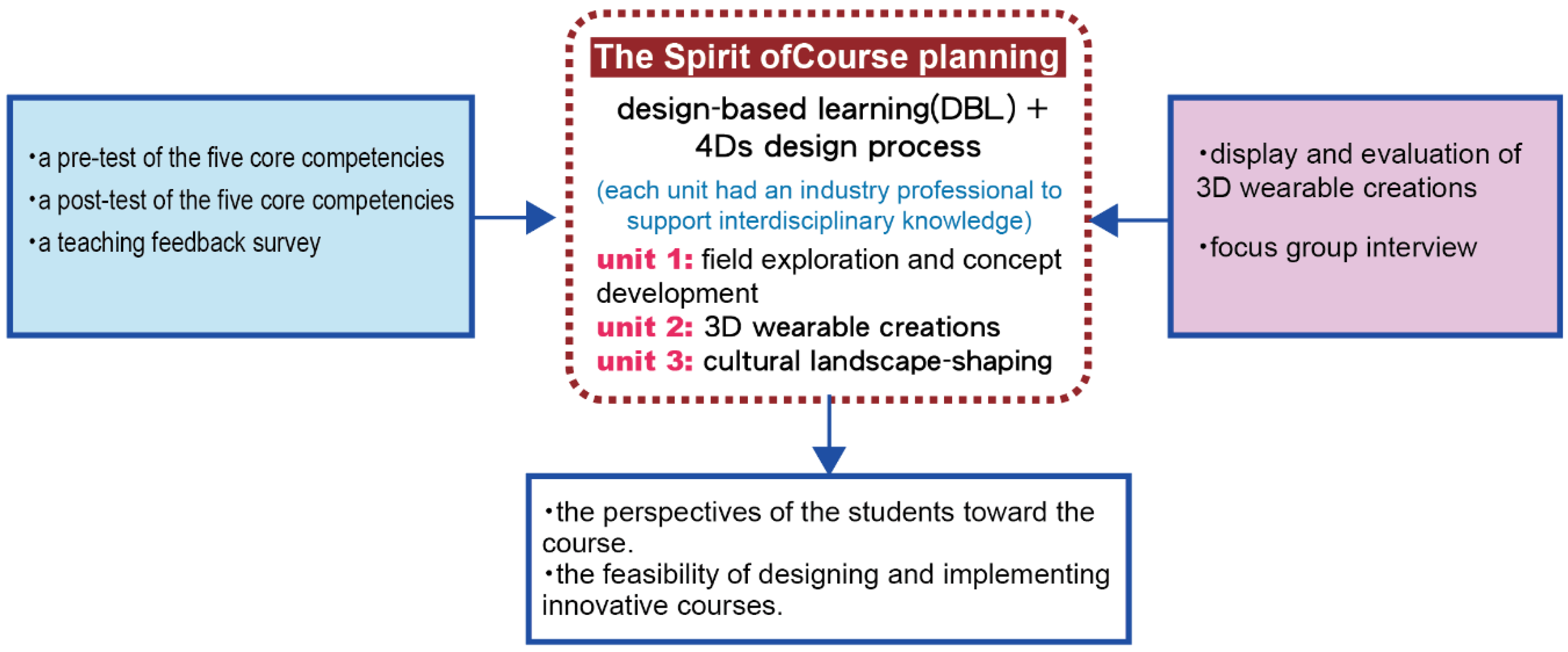
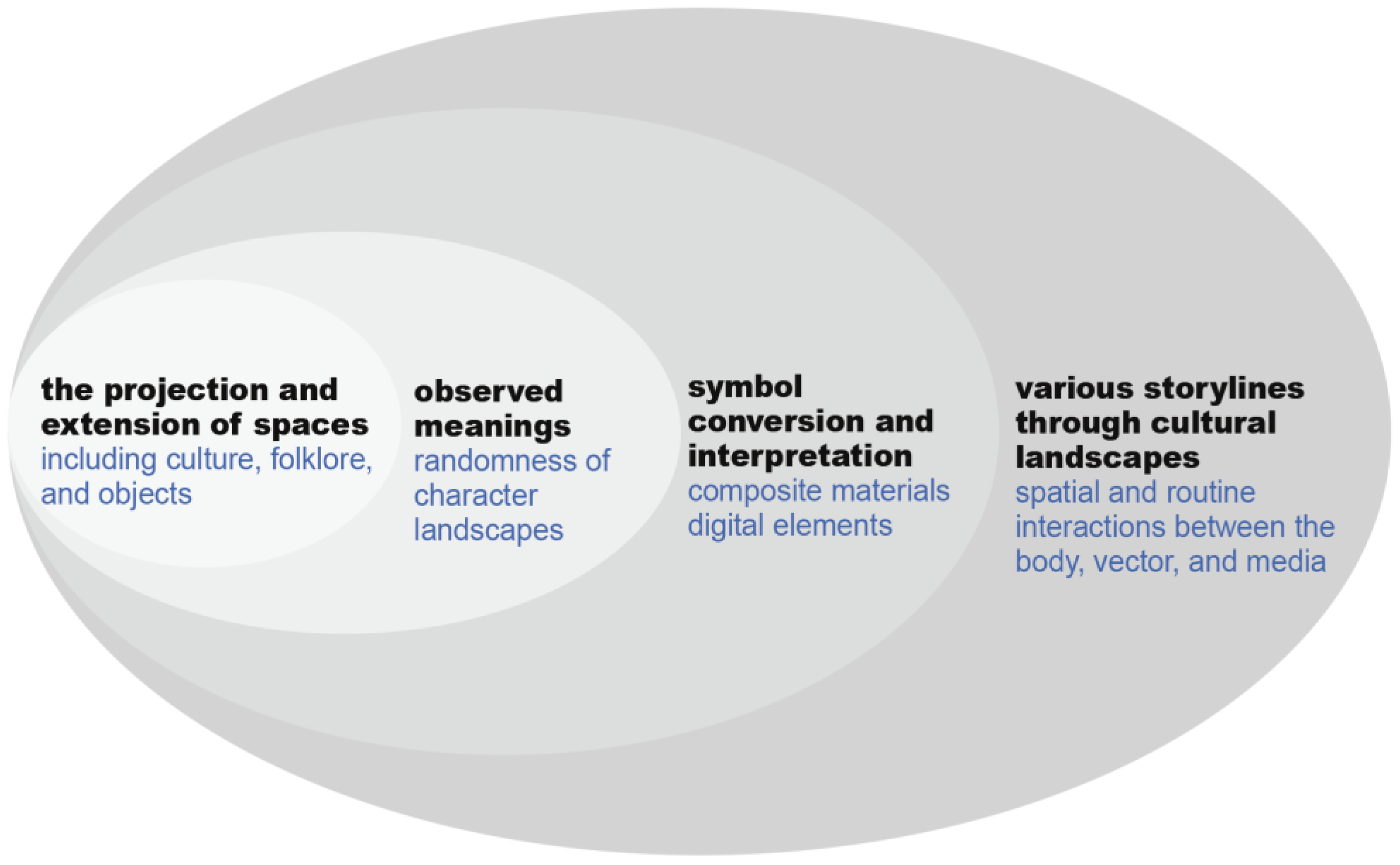
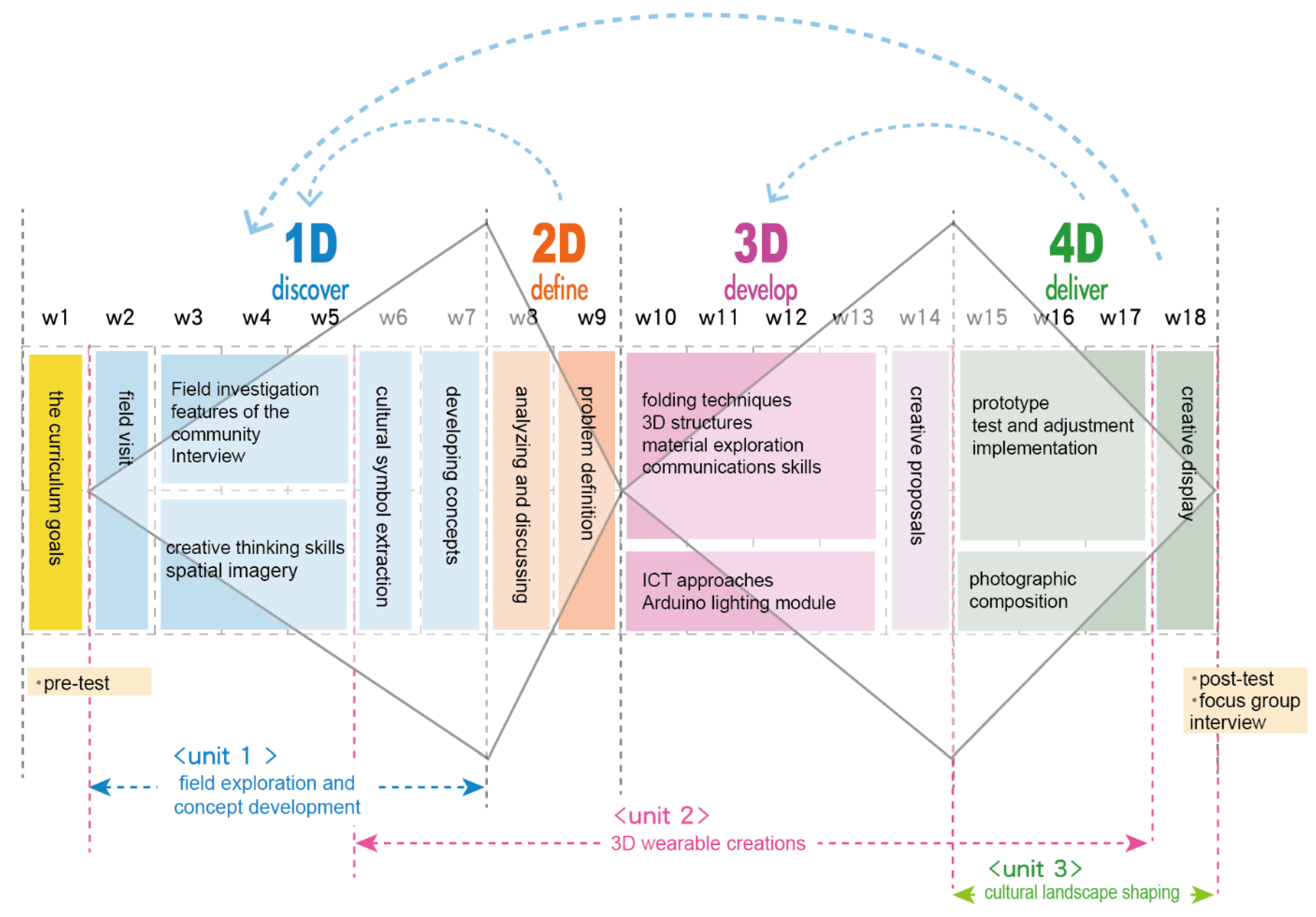
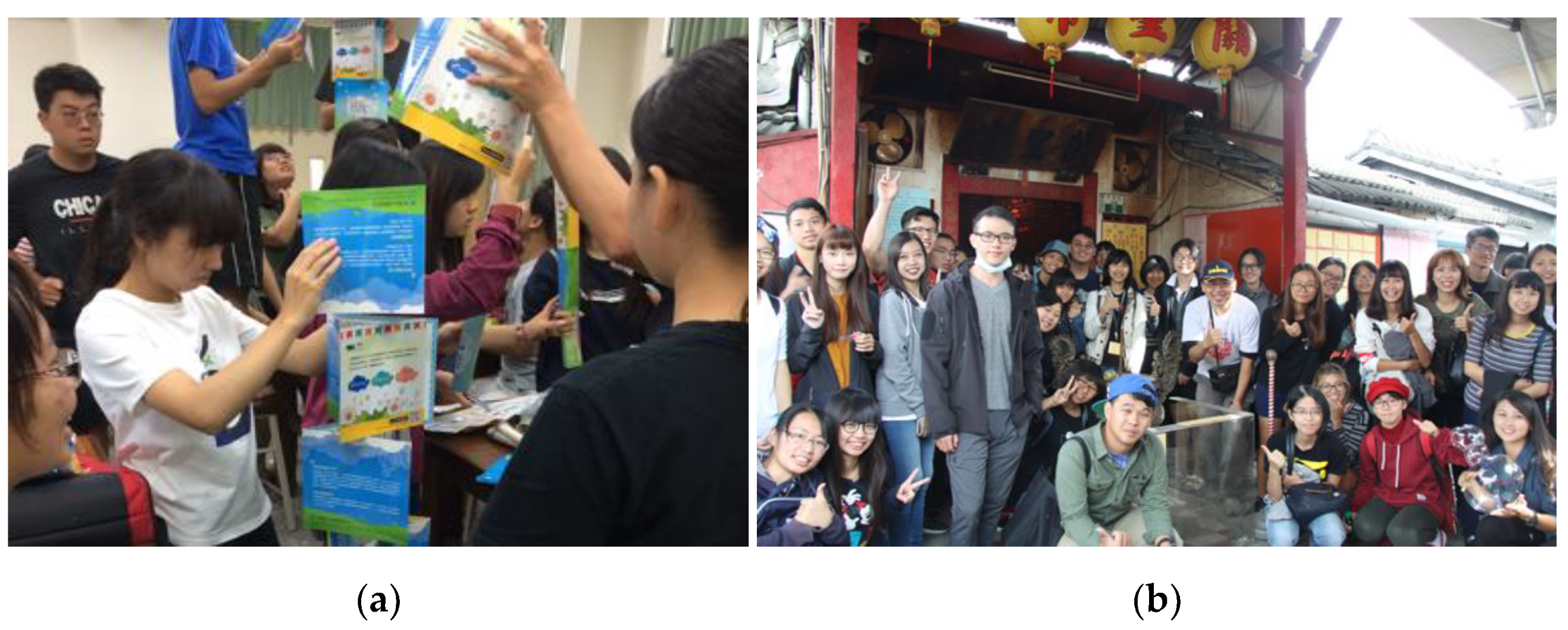
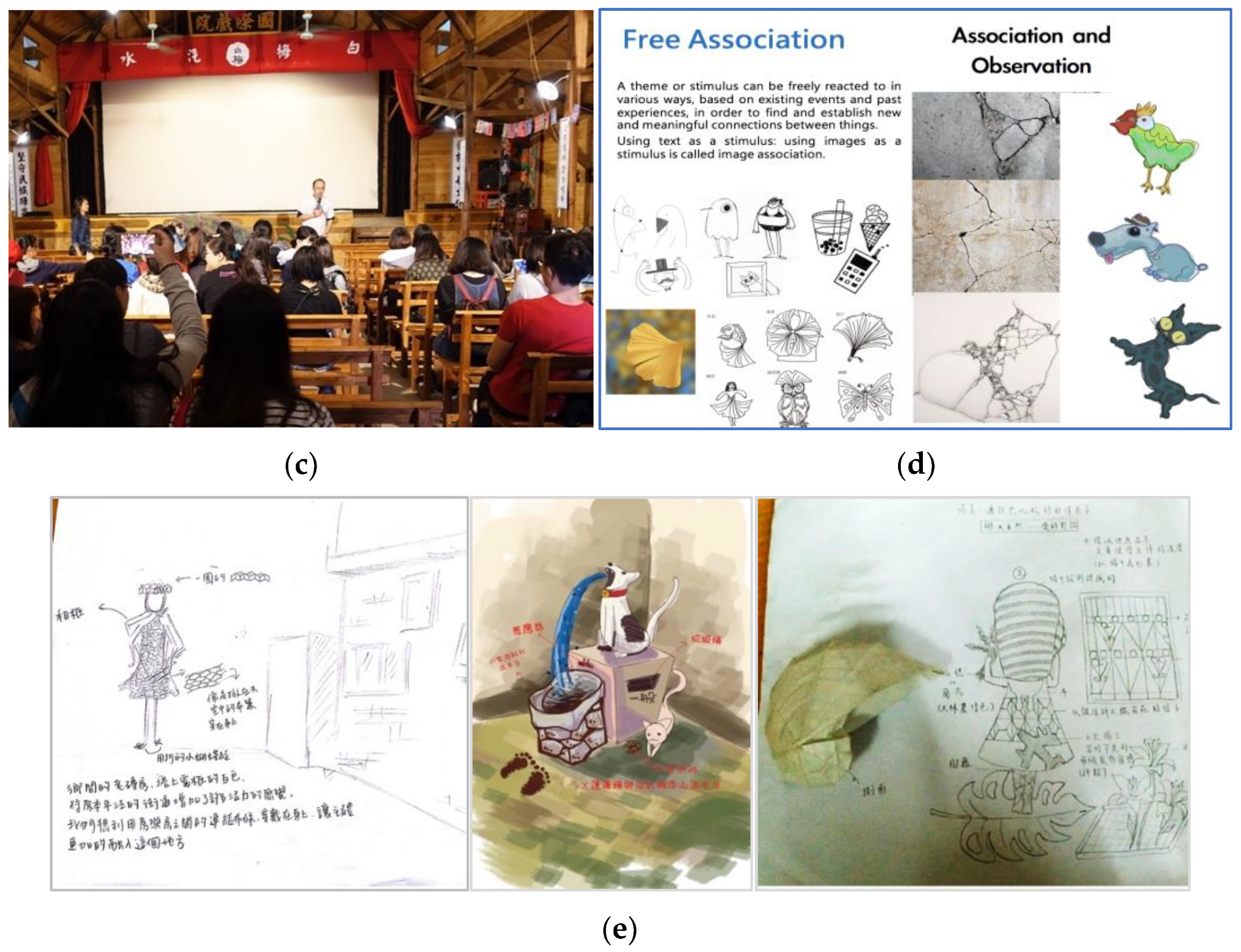
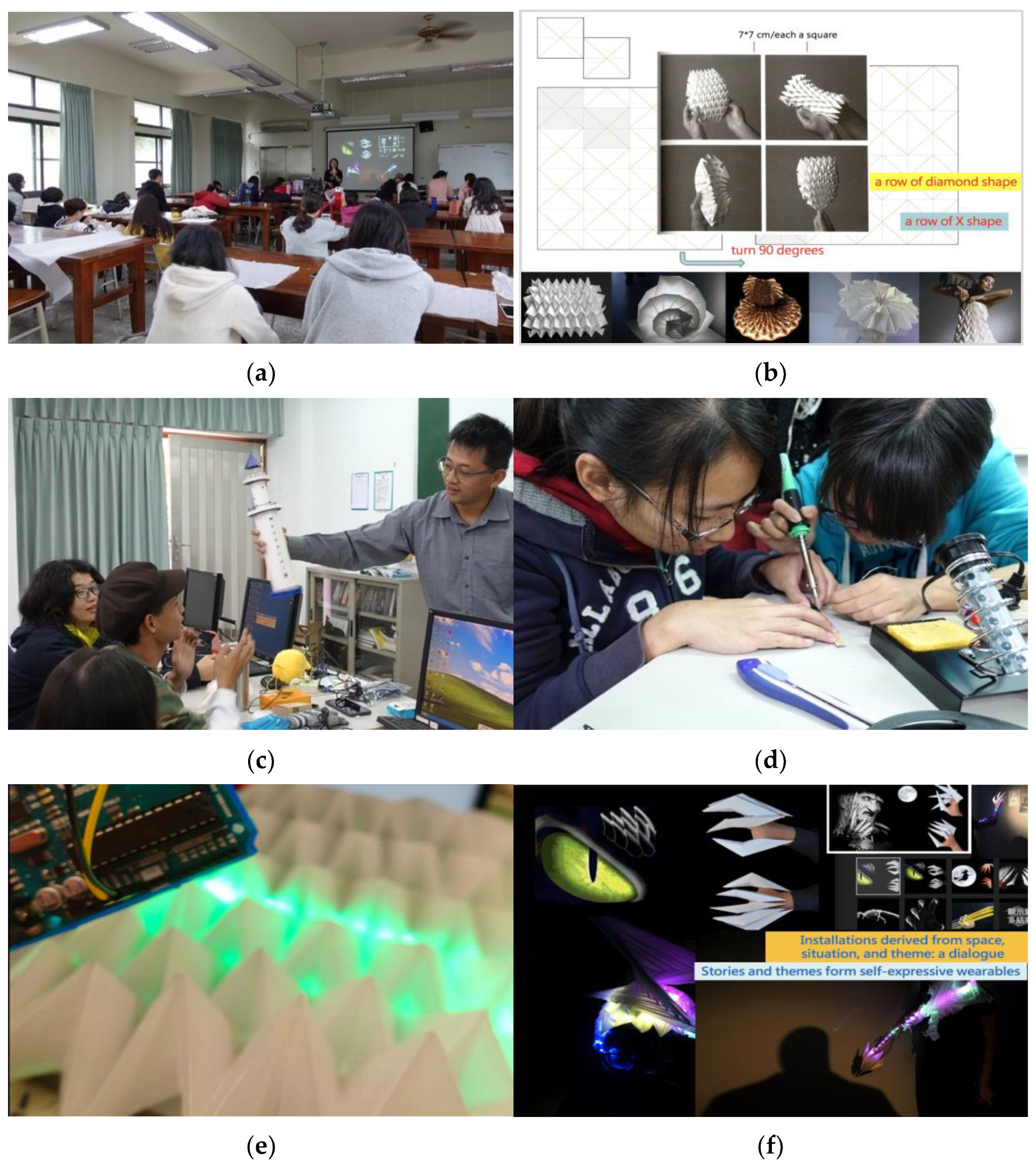
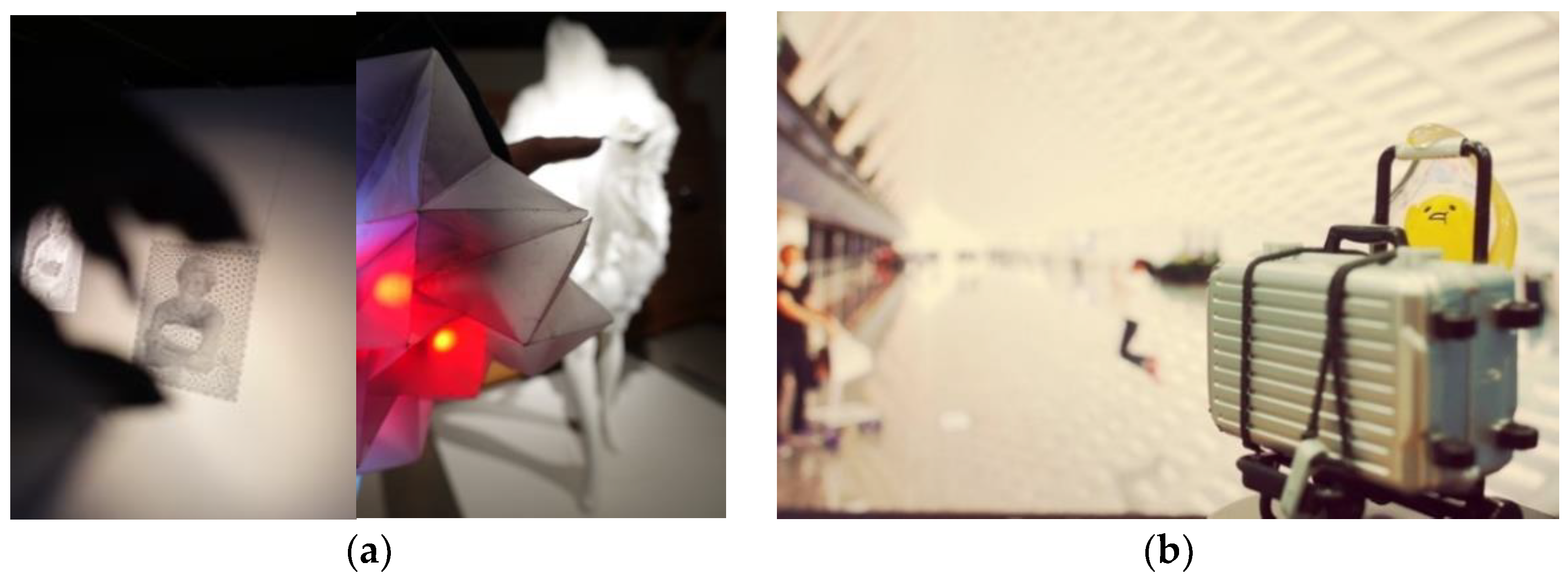
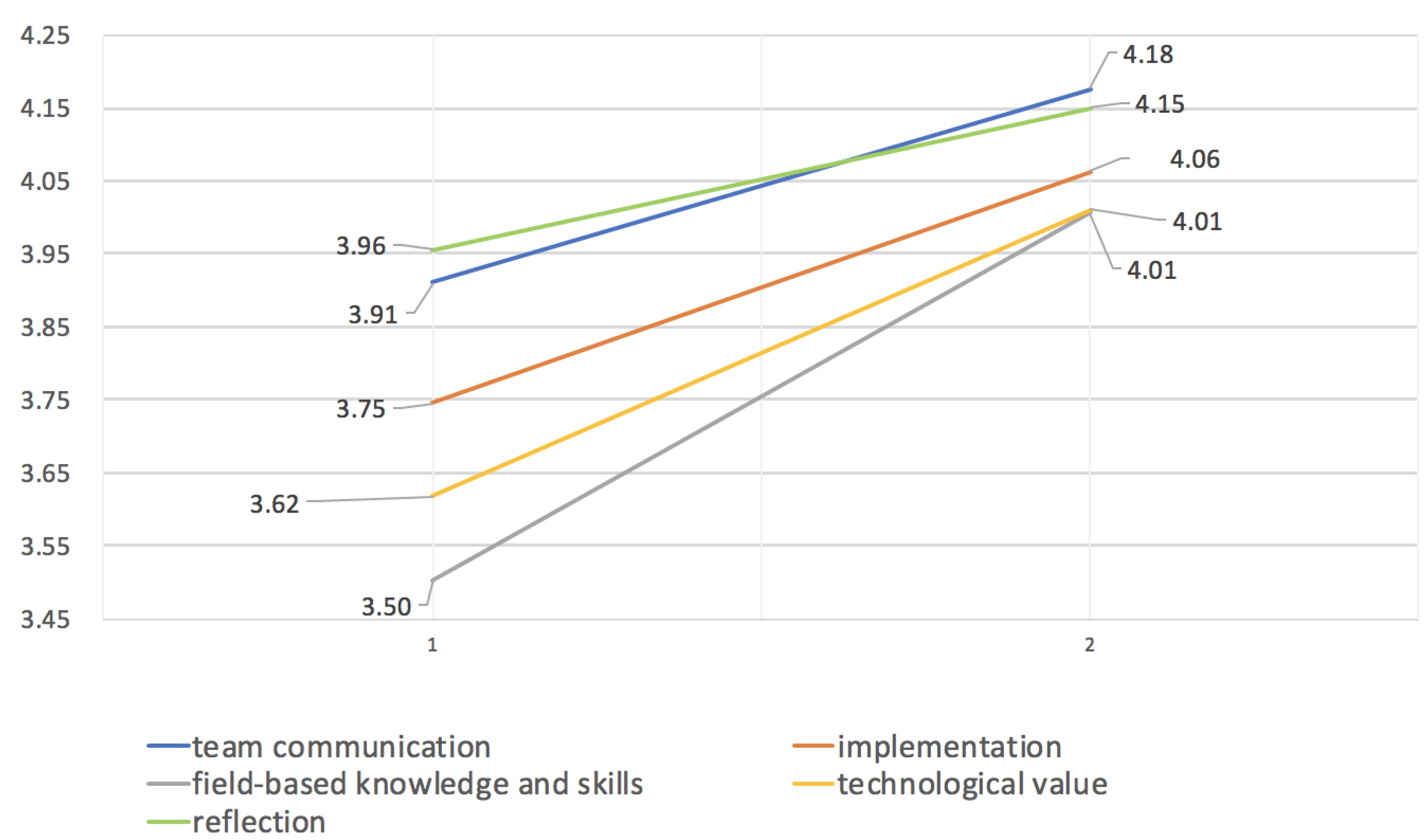
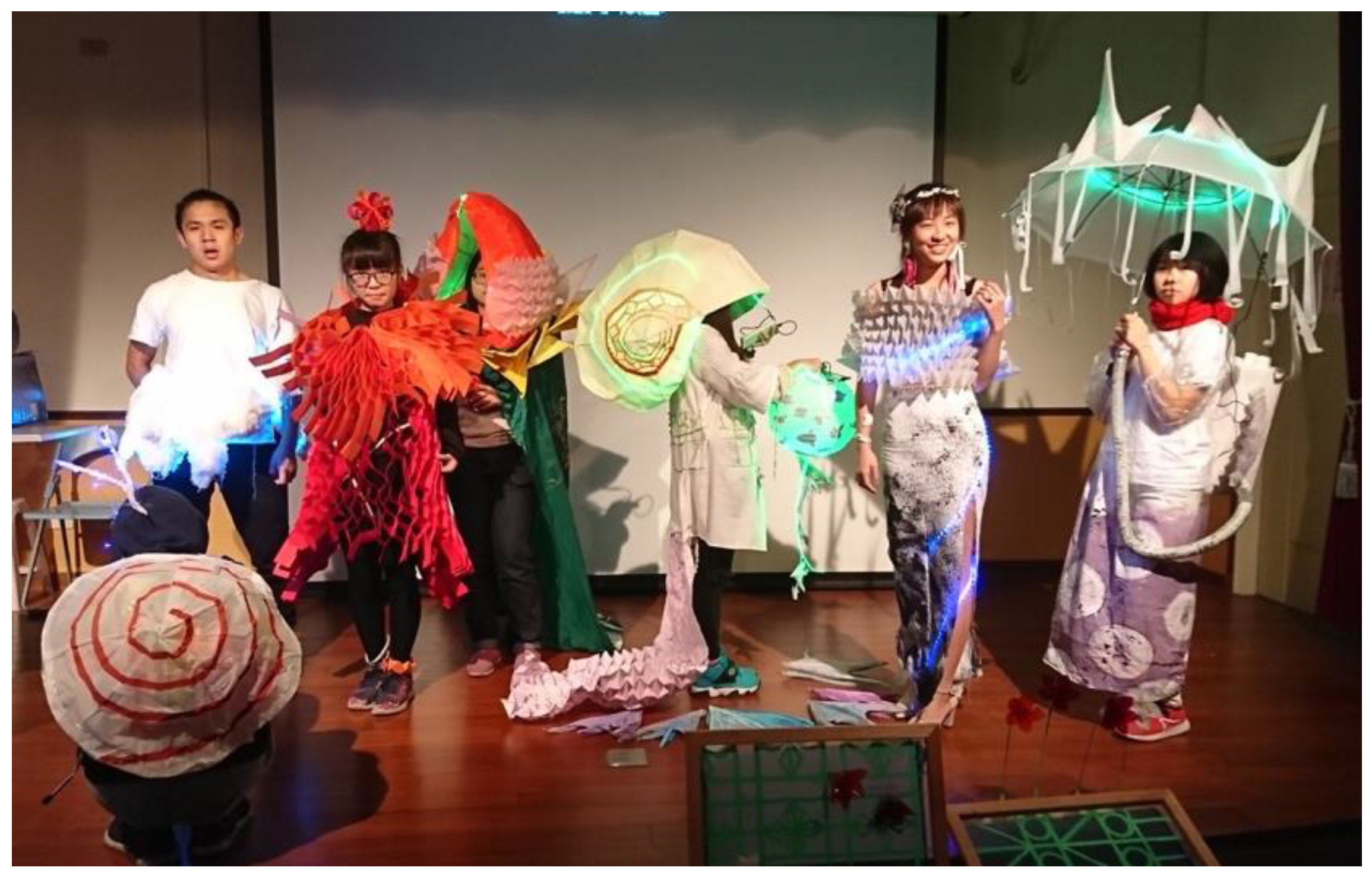



| Team Member | |||||
|---|---|---|---|---|---|
| Title | |||||
| Creative Concept | |||||
| Evaluation Items | Overall Performance (70%) | Technology (10%) | Teamwork (20%) | ||
| Concept (20%) | Aesthetics (20%) | Innovative Thinking (30%) | |||
| Description | The appropriateness of a creation with respect to the definition of the problem and the subjectivity if conversing with urban spaces. | The overall aesthetics that constitute the shapes, colors, artistic expression methods of the wearable creations’ shapes, colors, and expression skills. | The conceptualization of the creations as well as the means of conversion, interpretation, and expression, and the ability to demonstrate a unique and innovative imagination of the cultural landscapes. | The originality and appropriateness of applying technology when creating wearable creations, as well as the completeness of the audiovisual storylines. | The communication within team members and their rapport during the creation process. |
| Score | |||||
| Total Score | |||||
| Comment | |||||
| Negative Ranks | Positive Ranks | Test Statistics | |||||||
|---|---|---|---|---|---|---|---|---|---|
| n | Mean Rank | Sum of Ranks | n | Mean Rank | Sum of Ranks | Ties | Z | p | |
| Team communication (post-pre) | 6 | 7.58 | 45.50 | 12 | 10.46 | 125.50 | 3 | −1.747 b | 0.081 |
| Implementation (post-pre) | 6 | 10.33 | 62.00 | 14 | 10.57 | 148.00 | 1 | −1.610 b | 0.107 |
| Field-based knowledge (post-pre) | 3 | 10.00 | 30.00 | 18 | 11.17 | 201.00 | 0 | −2.987 b | 0.003 * |
| Technological value (post-pre) | 5 | 7.10 | 35.50 | 13 | 10.42 | 135.50 | 3 | −2.192 b | 0.028 * |
| Reflection (post-pre) | 7 | 9.79 | 68.50 | 12 | 10.13 | 121.50 | 2 | −1.068 b | 0.286 |
| No | A | B | C | D | E | F | G |
|---|---|---|---|---|---|---|---|
| Works | 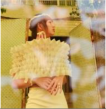 |  |  | 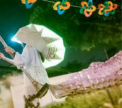 | 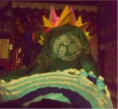 | 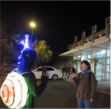 | 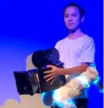 |
| Team name | Do you remember you? | Jingle bells | Elves | Migration | Bless and light | Slow city slow travel | Time machine |
| S1 | 64 | 65 | 61 | 67 | 66.5 | 60 | 58 |
| S2 | 6 | 8 | 7 | 8 | 8.5 | 6.5 | 6.5 |
| S3 | 17 | 18 | 17 | 19 | 17 | 15.5 | 15.5 |
| Sum | 87 | 91 | 85 | 94 | 92 | 82 | 80 |
| S1: overall performance of the work (70%); S2: technology application (10%); S3: teamwork (20%); Sum: total score. | |||||||
| Verbatim | Coding |
|---|---|
| Impressed to go out and enjoy the course schedule. | (E1-Q4-01) |
| Few teachers take us out of school to attend classes. After seeing the experience with my own eyes, I will have more ideas before making work. | (D5-Q2-03) |
| Create after actually feeling, the things you make will have feelings. | (D4-Q4-05) |
| You can go out to play for the first time in class. I was shocked to see things that I couldn’t see before, like the stories of old theaters. The tour guide told a lot of secrets about Dalin and interesting stories about residents’ lives. Our younger generation doesn’t know the real face of Taiwan. | (B1-Q3-03) |
| Most of the students are very willing to spend time on this course. Although it is troublesome to go to Dalin all the time, I am very happy every time I go to Dalin to find inspiration. | (B4 -Q3-13) |
| I feel that I usually see too few things. If I didn’t go to that community to see so many things, I wouldn’t have seen a lot of connotations. | (E2-Q6-02) |
| Going outside is not just in the classroom, digging out local characteristics. | (B2-Q6-02) |
| Verbatim | Coding |
|---|---|
| I like to choose the objects I want to make, and I am very excited when I see shelves full of materials. | (E2-Q4-21) |
| Origami for the first time requires patience, and it often breaks accidentally, but it is amazing, to see a piece of paper turn out to be very powerful. In the future, I would like to continue to study. | (B1-Q3-09) |
| I like that after the work is finished from the sketch, the whole work is then shot in real life. The work is very beautiful and has a sense of accomplishment. | (D2-Q4-06) |
| The overall sense of accomplishment the moment the work is completed. | (B2-Q3-10) |
| Verbatim | Coding |
|---|---|
| During the process, I was a little anxious, had too little time, unable to complete it, and there were many negative emotions. But in the end, the team completed the finished product together and won awards in the competition. The feeling of being recognized after suffering first, I feel a sense of accomplishment. | (E1-Q7-02) |
| It feels very fulfilling to finish the cloak, and I like that everyone stays up all night doing it together. | (E3-Q4-06) |
| Although I feel tired during the creation period, it is very fulfilling and special. I am very excited that the work can return to its original place and interact with the space. | (D3-Q2-05) |
| At the presentation of the results, everyone’s works are very interesting, and everyone is on the stage together. | (B2-Q3-02) |
| In the beginning, you need to overcome the eyes of others, but some persistence is necessary, so do it if you feel confident. | (D1-Q3-08) |
| Verbatim | Coding |
|---|---|
| I like the feeling of returning to Dalin after the actual operation. It is a good thing to give back to it with my own strength and help it with my thoughts on this town. | (D1-Q4-04) |
| Dalin has a common memory of us coming from the countryside. | (D5-Q2-07) |
| Help towns develop (discover) local characteristics that cannot be replaced by others, and will want to join the community to assist in the future. | (D1-Q6-03) |
| Verbatim | Coding |
|---|---|
| This course pays attention to teamwork, and it is really difficult for one person. I used to think that doing things alone is more efficient, but this time I have a chance to think that the group is not bad. | (D4-Q3-06) |
| If you have any ideas, you must speak them out. Some team members may be afraid of being denied or afraid to speak up. Our group was very excited during the discussion as if they were debating, but it was fine after the discussion. | (D3-Q7-2) |
| In my department, we all created by ourselves. This time we all made it together. No one was particularly tired or idle. We all thought made and cut together… It was hard work but fun. | (B1-Q7-05) |
| Verbatim | Coding |
|---|---|
| I insisted on a lot of things. I thought the window grille was ugly after it was finished. I took it down and tried three different materials before it succeeded. | (D3-Q4-11) |
| I stick to film quality. | (D1-Q4-12) |
| The persistence of the team makes our work perfect, thank you for everyone’s persistence, and let us keep doing it. | (D4-Q4-27) |
| There are so many situations in the process that make people want to give up, but in the end, it is persistence, so I want to cherish it very much. | (B4-Q6-07) |
| I would like to thank my team members for their hard work in making the quality of the work achieve excellent results, and I would also like to thank the teachers for their hard work so that our creative ideas can be revealed and put into practice. | (B3-Q3-05) |
| Learned a lot from the team members and enjoyed the cooperation. | (E3-Q5-02) |
| During the process, we were arguing about the design performance. (Ha) In the end, the quarrel became very pleasant. | (E2-Q5-03) |
| The risk of cooperation is shared by everyone, which is more efficient, and it is great to have a chat partner. | (E1-Q4-26) |
| Verbatim | Coding |
|---|---|
| The most impressive thing is origami. The first time I came into contact with it (laughs), I was crazy about folding, and then I started to pay attention to origami skills. | (D3-Q3-01) |
| Because origami is difficult to fold, I thought it was cool when I first came across it. | (E2-Q3-05) |
| I insisted on various camera angles, and later went to take photography courses and paid attention to the application of clothing styling. | (D2-Q3-02) |
| I take photography classes, learning photography skills, dynamic photography, and various composition. | (D1-Q3-03) |
| Interactive art has always been difficult, but after getting in touch with it, it is really interesting and I really want to learn it. | (D5-Q3-05) |
| The creative thinking unit is very interesting, the teacher’s course presentation file is very exciting, the expression of crack transformation is great, and the use of paper to make clothes is also amazing. | (B1-Q3-14) |
| The bionic design is so cool, I never thought that nature can be our teacher everywhere, and the example of machinery using wind and kinetic energy to rotate itself is attractive. | (E1-Q3-15) |
Disclaimer/Publisher’s Note: The statements, opinions and data contained in all publications are solely those of the individual author(s) and contributor(s) and not of MDPI and/or the editor(s). MDPI and/or the editor(s) disclaim responsibility for any injury to people or property resulting from any ideas, methods, instructions or products referred to in the content. |
© 2022 by the author. Licensee MDPI, Basel, Switzerland. This article is an open access article distributed under the terms and conditions of the Creative Commons Attribution (CC BY) license (https://creativecommons.org/licenses/by/4.0/).
Share and Cite
Hu, H.-J. The Design and Implementation of an Innovative Course on the Creation of Cultural Landscape Images: A Case Study of Dalin Township in Taiwan. Educ. Sci. 2023, 13, 36. https://doi.org/10.3390/educsci13010036
Hu H-J. The Design and Implementation of an Innovative Course on the Creation of Cultural Landscape Images: A Case Study of Dalin Township in Taiwan. Education Sciences. 2023; 13(1):36. https://doi.org/10.3390/educsci13010036
Chicago/Turabian StyleHu, Hui-Jiun. 2023. "The Design and Implementation of an Innovative Course on the Creation of Cultural Landscape Images: A Case Study of Dalin Township in Taiwan" Education Sciences 13, no. 1: 36. https://doi.org/10.3390/educsci13010036
APA StyleHu, H.-J. (2023). The Design and Implementation of an Innovative Course on the Creation of Cultural Landscape Images: A Case Study of Dalin Township in Taiwan. Education Sciences, 13(1), 36. https://doi.org/10.3390/educsci13010036









